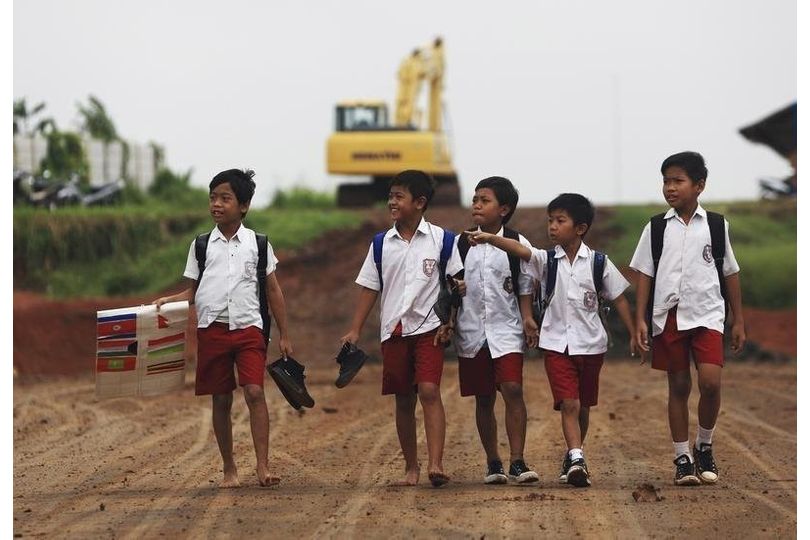Education Policies in India Have Failed to Eliminate Inequality for 75 Years
on Aug 22, 2022

While the country commemorates the 75th anniversary of India's independence, it is also time to take stock. What did India's founders and citizens hope for, how has India performed, and what have our challenges and triumphs been?
At the time of independence, Indian officials were well aware of the country's poor educational situation. Because of the low penetration of basic education, crude literacy in undivided India was only 16%, which could be attributed not only to the British government's apathy towards the development of the Indian masses but also to a culture of denial of education to the underprivileged sections of society, including women.
As a result, pro-education and anti-caste forces requested that education be made a fundamental right while the constitution was being drafted. Others, on the other hand, were unwilling to change the status quo, citing a lack of resources to fulfill a constitutional obligation. In this competitive political environment, the Constituent Assembly established Article 45 as a non-judicial component of India's constitution in 1949, directing the state to offer free and compulsory education to all children until the age of fourteen within 10 years.
Literacy increased by only 24% in ten years. The government appointed the Kothari Commission to address the situation (1964). The Commission suggested, among other things, the establishment of a common public education system and a steady rise in government spending on education from 2.9% of GDP at the time to 6% by 1985-86. Even after 55 years, these Kothari Commission recommendations remain unimplemented!
J.P. Naik (1982), a famous educationist and member-secretary of this Commission, was harshly critical of the Government of India's progress on the Commission's recommendations, stating that "no political party in the country is committed to the fundamental rebuilding of education."
In this hesitant context, the constitution was changed in 1976 to make education a "concurrent" issue, allowing both the Union and state governments to create educational policy, provide money, and enforce execution. Previously, state governments had sole authority over it. To address education issues, the Union government produced a new National Education Policy (NEP) in 1986, which contained a section on "making the system work." This policy, along with its amendment in 1992 and the Program of Action, became the guiding policy for subsequent initiatives by the Government of India and the states.
Operation Blackboard, which began in 1988, was one such project focused on supplying the bare necessities in schools, such as teachers, infrastructure, and teaching and learning materials. According to evaluations of this effort, its results fell far short of expectations (PROBE, 1999; Dyer, 2000). The Government of India launched the World Bank-funded District Primary Education Programme (DPEP) in some chosen districts in 1994 with the goal of increasing enrollment, reducing dropouts, and improving learning results through a decentralized planning paradigm.
While some experts found optimism in the district-level, decentralized model for improving implementation prospects, former NCERT head Krishna Kumar was harshly critical of it. According to him, the DPEP was merely a smokescreen to conceal the hazards of structural adjustment, which India began in 1991 and failed to achieve even the lowered (in comparison to international benchmarks) objectives of minimum levels of learning. Kumar argued that DPEP harmed Indian education by decreasing the quality and status of teachers through the temporary hiring of para-teachers and encouraging the establishment of poor alternative schools.
In this historical backdrop of hesitation, suboptimal policy design, and inadequate implementation, the state introduced the Sarva Shiksha Abhiyan (SSA) in 2000. Under pressure from the rising ambitions of caste victims in the post-Mandal era and the global campaign for Education for All, which began in 1990 at Jomtien, the concept of universality was included in education policy for the first time.
The Right to Education (RTE) Act, which came seven years after the 86th constitutional amendment and nearly 50 years after the promised date in the constituent assembly, did not propose the radical structural reforms required to provide equitable quality education to all by making necessary changes in the institutional and policy ecosystems, but instead continued the SSA policy of universalizing low-quality education.
The outcomes speak for themselves. We have a low-quality, pro-private, hierarchical school system after 75 years of Indian freedom. The vast majority of poor and disadvantaged parents are unsure whether the education their children get will enable them to achieve a fair living, let alone an egalitarian social and economic order, as the preamble and directive principles of state policy claim. Ironically, India's hierarchical education system mirrors the graded inequality that characterizes the caste system, with RTE requirements deemed lower than CBSE norms. The wealthy send their children to well-managed unassisted private schools, while the poor are stuck with poorly managed low-fee private schools and insufficiently built and resourced government schools.
In 75 years of battling oppressive British rule, why are we still struggling to provide universal, equitable, and high-quality elementary education for our children? One factor could be that universal education did not come naturally to Indian politicians. According to Weiner, who studied child labor and education policy in India, India's ruling elites were skeptical of universal education's efficacy.
Another issue that should concern patriotic Indians is whether uneven education can assist us to achieve the goals of social, economic, and political justice, as well as equality of status and opportunity, as envisioned in the Indian constitution. Dr. B.R. Ambedkar forewarned us about the dangers of social reproduction through education in 1956:
“If you give education to that stratum of Indian Society which has a vested interest in maintaining the caste system for the advantages it gives them, then the caste system will be strengthened. On the other hand, if you give education to the lowest strata of Indian Society which is interested in blowing up the caste system, the caste system will be blown up.”
Will we take this opportunity to reflect upon 100 years of unequal education in India and allow education to become a tool for social change or will we feel disheartened again after 25 years?



.jpg)






.jpg)

.jpg)
.jpg)
.jpg)
.jpg)
.jpg)
.jpg)

.jpg)










Sorry! No comment found for this post.